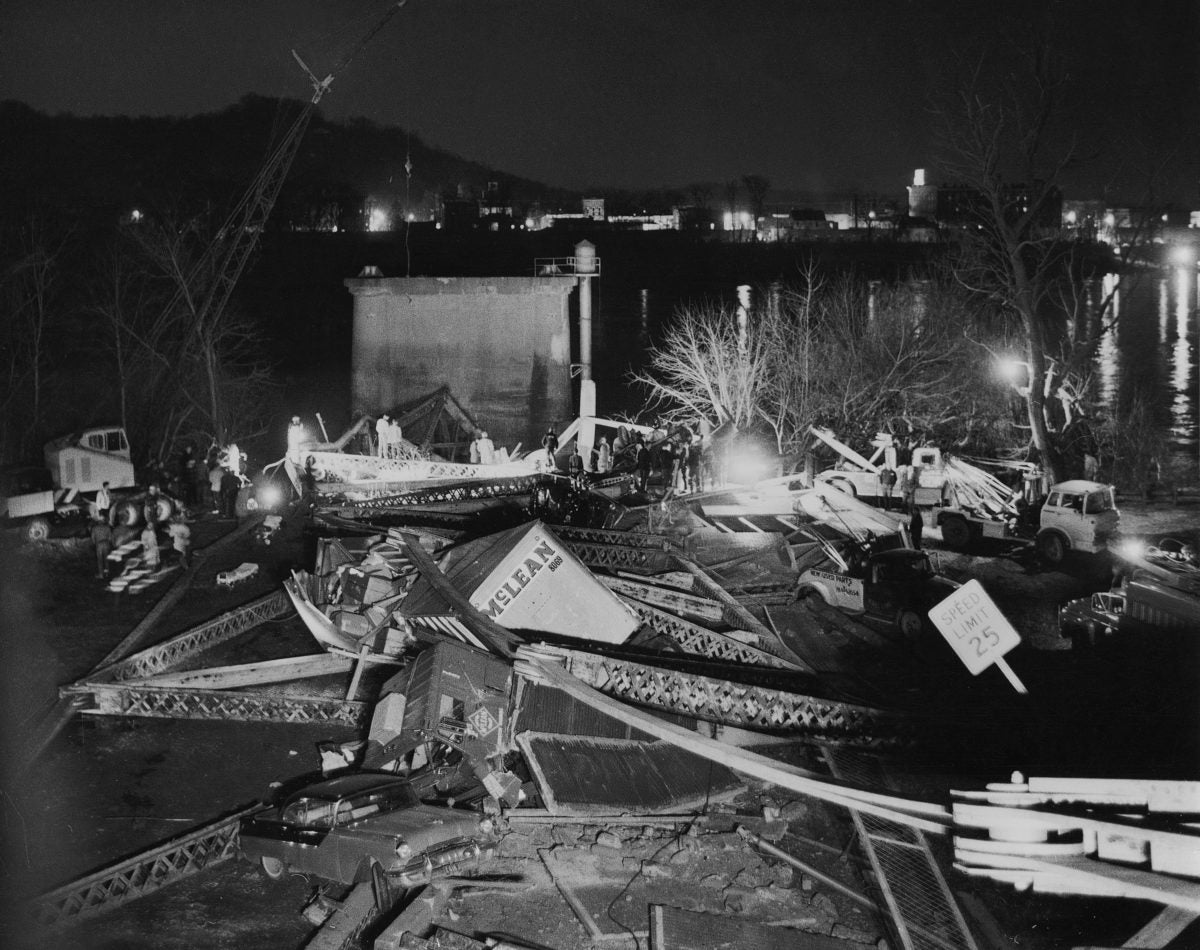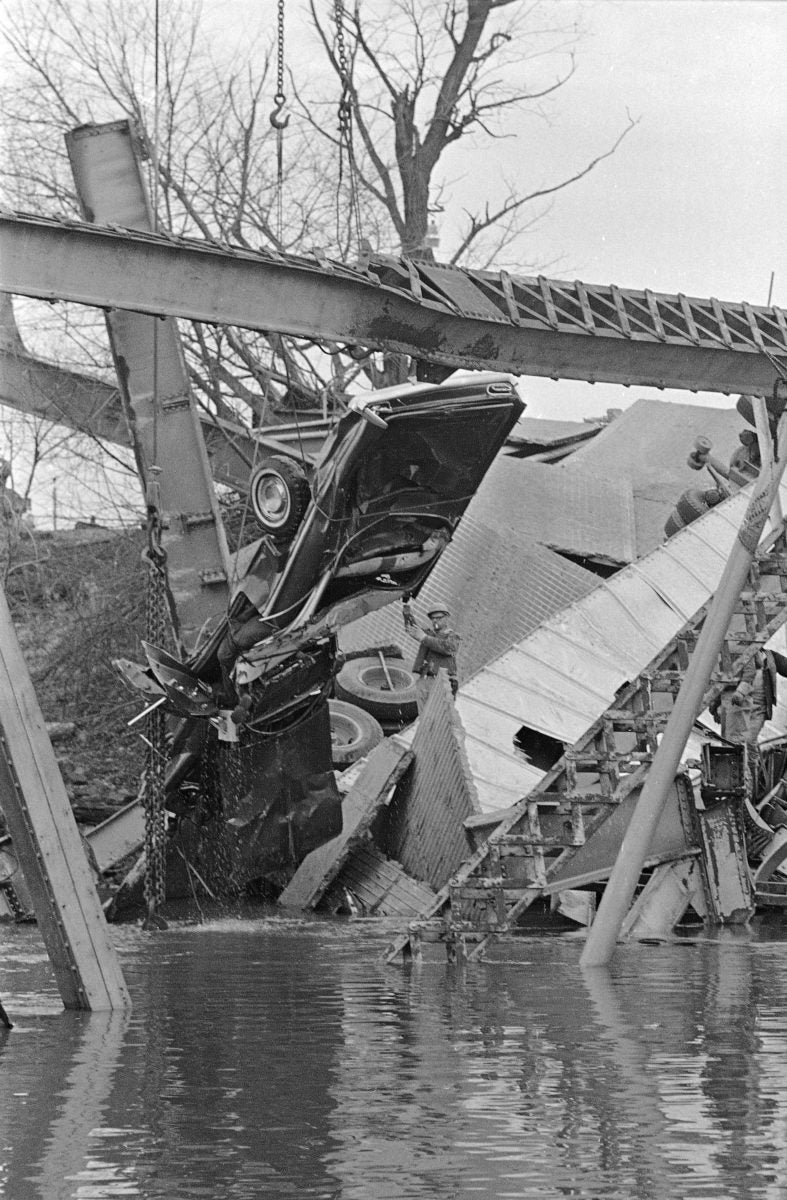FreightWaves Classics is sponsored by Old Dominion Freight Line — Helping the World Keep Promises. Learn more here.
Thursday marked the 55th anniversary of the Silver Bridge collapse in West Virginia and Ohio, regarded as the deadliest bridge collapse in modern history. A minor flaw in one of the eyebars, No. 330, that formed the suspension bridge caused it to fail, according to a video course at Open University. It was located on the Ohio side of the bridge.
The eyebar had high levels of residual stress from its manufacture, allowing water to pool at the bottom of the eyehole. Over the course of 39 years, a crack formed and grew until it was eventually 3 millimeters long. Temperatures in the area on Dec. 15, 1967, were near freezing, making the material of the bridge more brittle than normal. All this caused the crack to grow almost instantly down to the outer edge.
“This overloaded the upper side which separated with some signs of ductility,” said Open University. “The resulting asymmetric load on the pin caused it to twist, and the single eyebar that was left vibrated off the other side of the pin, at which point the chain was completely severed.
“The adjacent tower, being destabilized, started toppling and fell to the north. The road below twisted over and the other tower was pulled down into the river as well.”
Witnesses recalled hearing a gunshot-like noise at 5 p.m., according to the West Virginia DOT, and the bridge folded into the Ohio River, bringing 32 vehicles along with it. Forty-six people died; two bodies were never recovered.

“As I stopped, the bridge was coming forward like dominos, swaying back and forth, but the tower went to the north when it fell, and as I was seeing all of this, unbelievably, didn’t know what was really happening,” said Charlene Wood, an eyewitness, in Open University’s film. “I did know what was happening but it just hadn’t registered yet.”
The horrible tragedy of the Silver Bridge, so named for its aluminum color, set in motion a series of changes in bridge construction and maintenance.
Silver Bridge was a two-lane, 1,760-foot-long eyebar suspension bridge 102 feet above the Ohio River, connecting West Virginia and Ohio. It was said to be the first of its kind in the United States, having an eyebar chain design instead of traditional wire cables, said Engineering News Record in 1929. The bridge had a twin, the Hi Carpenter Bridge in St. Marys, West Virginia, with a very similar design so it was quickly shut down after the tragedy. The National Transportation Safety Board immediately launched an investigation.

Almost two months later, on Feb. 7, 1968, President Lyndon Johnson called for immediate reconstruction through a federal and state program. Additionally, the president created the National Bridge Inspection Standards, used throughout the U.S. for all inspected bridges.
The investigation revealed on April 6, 1971, the faulty eyebar as the cause. The event resulted in greater safety standards from a federal level being applied to all highway bridges.
“In America alone, there are over 1 million bridges and thanks to Silver Bridge, they all now receive regular inspection and maintenance,” concluded Open University.
If you’re interested in hearing more about the Silver Bridge collapse, and its ties to a famous paranormal story, you can listen to the Tracks Through Time podcast episode about it here. Tracks Through Time is a FreightWaves Classics podcast that covers interesting stories from the past in transportation and freight.
FreightWaves Classics articles look at various aspects of the transportation industry’s history. Click here to subscribe to our newsletter!
Have a topic you want me to cover? Email me at [email protected] or follow me on Twitter.











Brian Dudley
West Virginia still allows bridges to fall apart with no accountability pass the buck and take forever to fix